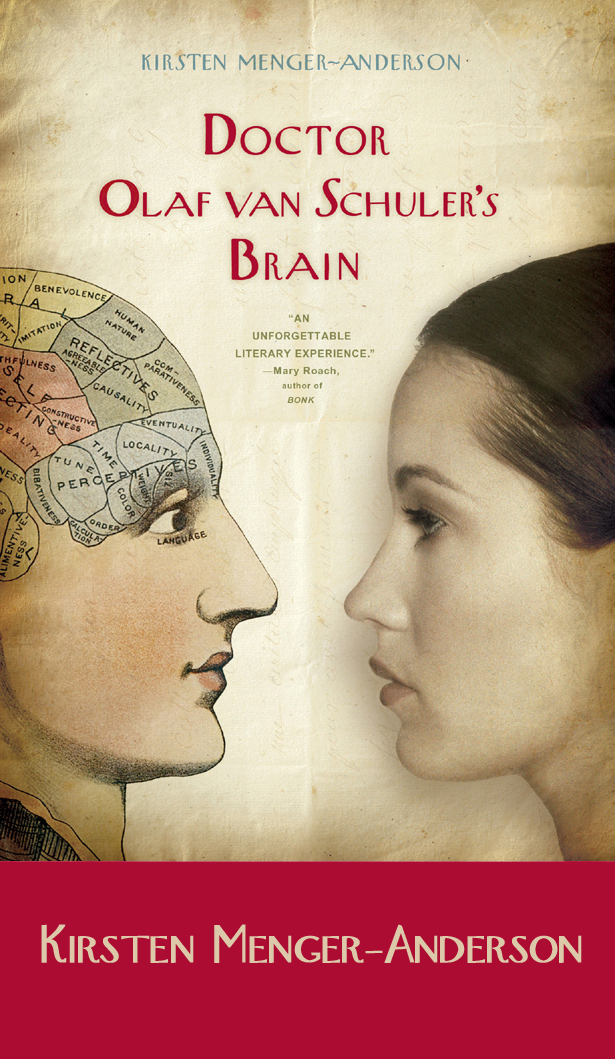Thursday, September 4, 2008
Doctor Olaf mentioned in the SF Chronicle
Doctor Olaf was listed in the SF Chronicle (along with titles by John Updike, Diane Johnson, Walter Mosley and Alan Cheuse) as one of the "more compelling titles coming out in the fall." Woo!
Tuesday, August 26, 2008
Bookshop Santa Cruz
I just heard that I'll be reading from Doctor Olaf at Bookshop Santa Cruz, my favorite childhood bookstore! The building is different from the one I knew (the original didn't survive the Loma Prieta earthquake), but I've been to the "new" location (only new in my mind--the earthquake was over 15 years ago), and I'm thrilled to be appearing there.
Details:
Monday, November 17, 7:30 pm
Bookshop Santa Cruz
1520 Pacific Avenue
Santa Cruz, Ca 95060
831 460 3232
Details:
Monday, November 17, 7:30 pm
Bookshop Santa Cruz
1520 Pacific Avenue
Santa Cruz, Ca 95060
831 460 3232
Wednesday, August 13, 2008
Doctor Olaf is on LibraryThing
I recently became a member of librarything.com, the "world's largest bookclub." I'm still exploring the site and setting up an author page, but already I'm impressed by the site and the number of readers and writers who use it. If you're a member, please drop by and say hello!
In related news, ten copies of Dr Olaf are currently available through librarything's Early Reviewers group. I'm pleased that Olaf is listed with such great company, including reader-requested favorites Company of Liars by Karen Maitland, Cul De Sac by Richard Thompson, Extraordinary Engines: The Definitive Steampunk Anthology by Nick Gevers, and Mr. White's Confession by Robert Clark. According to the FAQ, the readers who are selected to receive early review copies are chosen using lecanomancy--I had to look it up--but it involves throwing three stones into a basin and summoning a demon. Sounds fair to me! Though the site promises that other factors are considered as well.
In related news, ten copies of Dr Olaf are currently available through librarything's Early Reviewers group. I'm pleased that Olaf is listed with such great company, including reader-requested favorites Company of Liars by Karen Maitland, Cul De Sac by Richard Thompson, Extraordinary Engines: The Definitive Steampunk Anthology by Nick Gevers, and Mr. White's Confession by Robert Clark. According to the FAQ, the readers who are selected to receive early review copies are chosen using lecanomancy--I had to look it up--but it involves throwing three stones into a basin and summoning a demon. Sounds fair to me! Though the site promises that other factors are considered as well.
Friday, August 8, 2008
Card for Olaf
My mom designed some business cards for Dr Olaf:


I'm lucky to have a mom with good design sense!


I'm lucky to have a mom with good design sense!
Thursday, July 24, 2008
The Return of the Leech
Back in the day--the 18th and early 19th century, and perhaps as far back as 1000BC--leeches were the cure all, from headaches to hemorrhoids, fever to flatulence and the common cold. Dr. Johann Friedrich Dieffenback (1792-1847), an early practitioner of plastic surgery, even successfully utilized leeches to aid in the reconstruction of the nose of Caroline Rohl, who had suffered from "degenerative scrofula". Dr. R.T Sawyer, founder of what is considered the world's first leech farm, quotes the good doctor in an article that appeared in the British Journal of Plastic Surgery:
Today, leeches ("Hirudo medicinalis") are again being used in medicine, and are especially helpful when reattaching small multi-blood-vessel parts, like ears. In 2004, in fact, the FDA classified leeches as a medical device, the first of its kind: alive.
Live Science reports:
In a recent paper published in the journal Pain, Dr. Andreas Michalsen and his colleagues demonstrate that a treatment of 2-3 locally applied leeches lessened pain in the knees of women suffering from osteoarthritis more effectively than a 30-day course of topical diclofenac, a nonsteroidal anti-inflammatory drug.
Let's hear it for the leech!
Immediately after the transplant the tip of the nose
appeared chalk-white and started to change colour after a
few hours. Therefore, cold compressions were made and 20
leeches were applied to the surrounding area to soften the
developing inflammation, especially around the bridge of
the nose.
Today, leeches ("Hirudo medicinalis") are again being used in medicine, and are especially helpful when reattaching small multi-blood-vessel parts, like ears. In 2004, in fact, the FDA classified leeches as a medical device, the first of its kind: alive.
Live Science reports:
Leech saliva is made up of a potent cocktail of more than 30 different proteins that, among other things, helps to numb pain, reduce swelling and keep blood flowing.
In a recent paper published in the journal Pain, Dr. Andreas Michalsen and his colleagues demonstrate that a treatment of 2-3 locally applied leeches lessened pain in the knees of women suffering from osteoarthritis more effectively than a 30-day course of topical diclofenac, a nonsteroidal anti-inflammatory drug.
Let's hear it for the leech!
Wednesday, July 16, 2008
olaf at the book feast!
My publicist at Algonquin wrote to let me know that Olaf and I were invited to the author feast at the Pacific Northwest Booksellers Association's tradeshow in Portland this September. As soon as I know the exact dates I'll be going, I'll post them to the calendar. I'm excited! From the description, it sounds like I and a number of other writers are invited to answer questions and talk about our work at the book sellers' dinner, table to table rather than before an entire room, which is nice.
Tuesday, July 8, 2008
The Lobotomist
"The Lobotomist," a documentary about Walter Freeman (master of the "ice-pick lobotomy") aired on PBS in January of this year , but I just came across it online. Wow! In addition to introducing Walter Freeman and his methods for curing mental illness, the documentary features testimonials from several patients/their descendants. The daughter of Ellen Ionesco, the first patient to receive a "transorbital lobotomy," describes Freeman: "He looked kindly... very gentle."
Jocelyn Rice writes in Discover:
Freeman refined the technique of Egas Moniz, who in turn, was inspired by the work of Gottlieb Burckhardt, who is mentioned in "The Siblings", one of the stories in DOCTOR OLAF VAN SCHULER'S BRAIN, which, I suppose, is why I'm writing about it here. Check out the documentary if you have a chance. It's broken into short chunks, perfect for those times when one is feeling brain dead...
Jocelyn Rice writes in Discover:
By the mid-1940s, Freeman was touring the country performing dozens of ice-pick lobotomies each day. He used picks from his own kitchen and carpenter’s hammers. Sometimes, for kicks, he’d operate left-handed. Physicians who gathered to watch would throw up and pass out—but patients often got better. Freeman could turn people who were smearing feces on walls and cowering naked under furniture into calm and docile citizens.
Freeman refined the technique of Egas Moniz, who in turn, was inspired by the work of Gottlieb Burckhardt, who is mentioned in "The Siblings", one of the stories in DOCTOR OLAF VAN SCHULER'S BRAIN, which, I suppose, is why I'm writing about it here. Check out the documentary if you have a chance. It's broken into short chunks, perfect for those times when one is feeling brain dead...
Subscribe to:
Posts (Atom)
